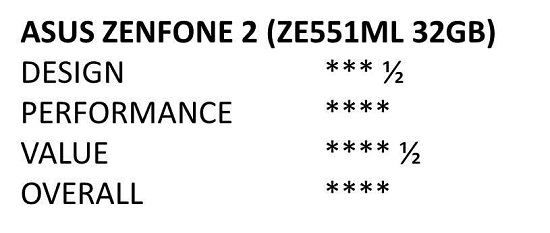DNA Test: The Asus ZenFone 2 hits the right pricing notes
By Keith Liu June 5, 2015
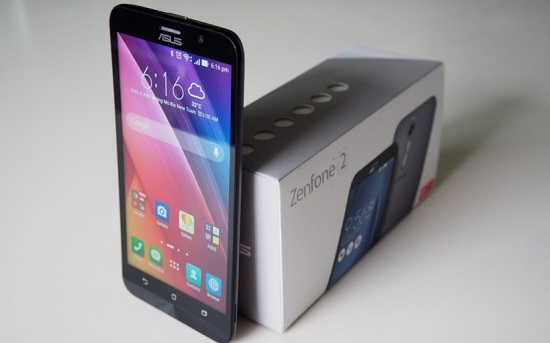
ASUS seems to have ported over its PC sales strategy to its smartphones portfolio.
Buying the new ZenFone 2 is like buying an Asus PC – you need to know what hardware specs you want before handing over your cash.
After all, the ZenFone 2 is not one specific smartphone. Rather, it’s a range of smartphones from the Taiwanese technology giant that utilises the same external design, but has different internal specifications, depending on the asking price.
The differences among the models are not insignificant either, and will affect the experience you have with the device.
The hardware changes range from the processor used (all of them powered by Intel’s Atom processors at this point, but at different clock speeds); the display size and resolution (HD or Full HD); the camera (8 megapixels or 13 megapixels); the memory (2GB or 4GB); and built-in storage (16GB, 32GB or 64GB).
Not all versions will be available in all markets, but generally Asus has streamlined the offerings in Singapore and Malaysia to these four models in the chart below:

To add to the complexity, an Asus spokesperson confirmed with Digital News Asia (DNA) via e-mail that it will be releasing the ZenFone 2 with Qualcomm’s Snapdragon processors as well in the near future, although no details of the timeframe or pricing was given.
For now, this DNA Test will be based on the unit which Asus has provided us for review: The 32GB version of the ZE551ML model, that’s endowed with the high-end Intel Atom chipset running at 2.4GHz, a PowerVR G6430 graphics chip, and a whopping 4GB of RAM – a first in the market with this amount of memory.
As such, the review score reflects our opinion of this particular model and not the lower-priced (and lower specified) ZE500CL and ZE550ML models, even though they are all called ZenFone 2.
Design and hardware
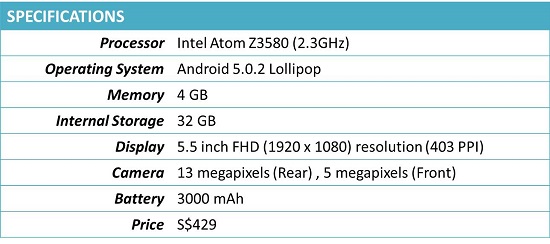
The ZenFone 2 takes some design cues from both Motorola’s Moto X and HTC’s One series, with a back that tapers down to the sides to sit nicely in the palm. As such, the device is thicker at the centre and thin around the edges.
Build quality is impressive. The plastic housing on the back is sturdy, and removing the back cover took some effort as it was nicely held together.
The ‘brushed metal’ look of the plastic cover is convincing, but the texture feels rough and unpolished. We believe this was by design in order to provide a better grip, but it didn’t feel that comfortable to hold.
Asus tried to keep the size of the 5.5-inch phablet manageable for one-handed use, but we wished it had made the bezels slightly thinner.
It also comes off feeling a little heavy, which is surprising, considering the plastic build.
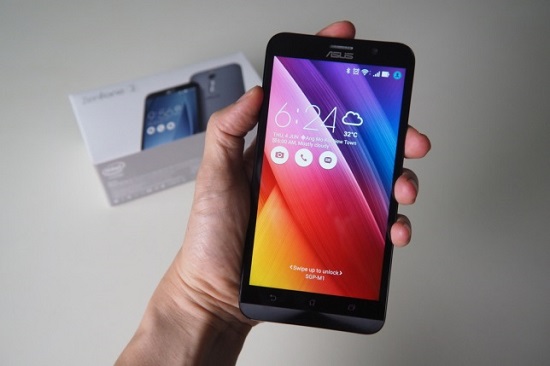
The power button, placed at the top, is awkward to reach and even harder to press. That forced us to rely on the double-tap gesture function to turn on and off the display, which thankfully, worked well.
We also had to acclimatise ourselves to using the volume rocker at the back of the device – similar to LG’s G series. These keys are placed right below the camera.
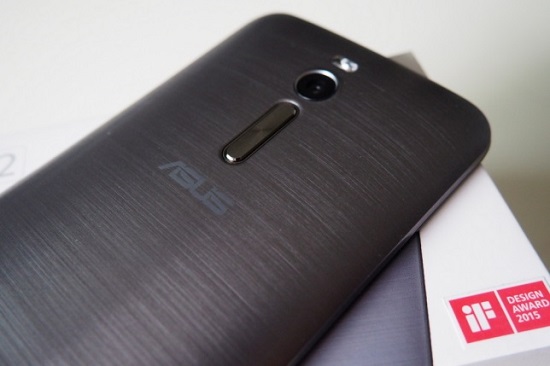
Moving further down you will find the speaker grill, and at the bottom of the unit is where micro-USB port and microphone are located.
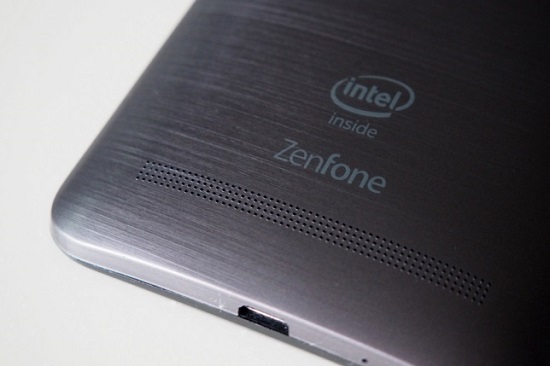
Branding has been fully incorporated into the design. Aside from the obligatory ‘Intel Inside’ logo (it helps unlock Intel marketing dollars for Asus), you will find an Asus logo on the front screen (below the earpiece) and below the volume keys, as well as the ZenFone logo above the speaker grill.
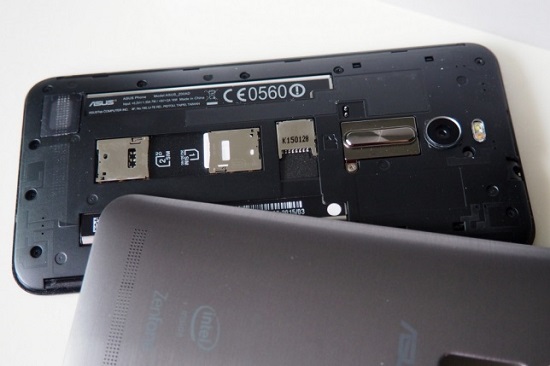
Opening the rear cover unveils the non-removable battery, two slots for micro SIM cards and a micro SD card slot for expandable storage.
Overall, the design of this series exudes a premium finish, more than what you would expect for the entry price, and that’s a good thing.
Display and cameras
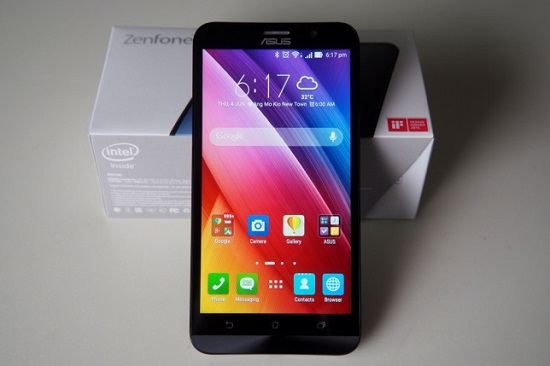
The 32GB version comes with a Full HD (1920 x 1080 resolution) display with a decent 403 pixels per inch. Corning’s Gorilla Glass 3 provides some scratch resistance and it also has an oleophobic coating to reduce fingerprints.
The brightness level on the display is average among the devices we’ve tested, and the IPS (in-plane switching) LCD panel provides natural colours and good viewing angles.
The auto-brightness level tended to be on the conservative (darker) side, but at least we could take it to the max in bright sunlight.
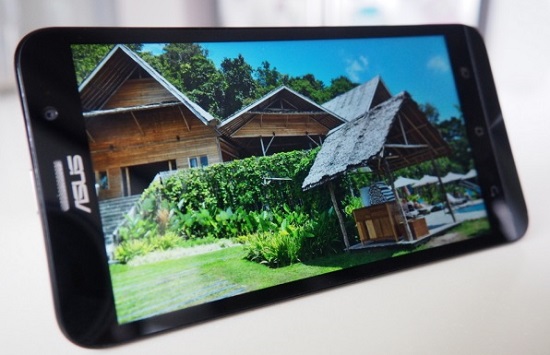
There are also options for Reading mode and Vivid mode (within the ‘Splendid’ app) that allows us to customise the display to better suit the content. Reading mode is ideal for web browsing, while Vivid mode is great for slideshows and movies.
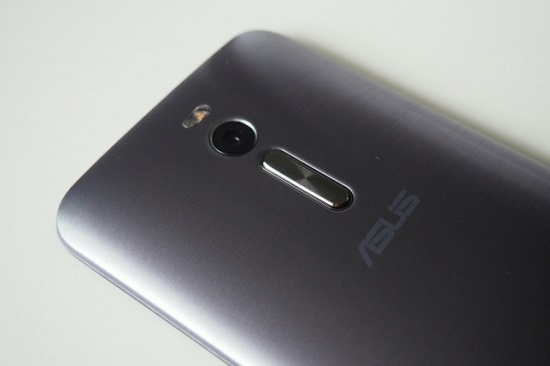
The 13-megapixel rear camera comes with an f2.0 aperture to tackle low-light situations.
It comes with a plethora of software options. Aside from the typical Auto, Manual, Night and Beautification modes, the Panorama mode worked really well, but the HDR (High Dynamic Range) for high-contrast shots, less so.
While these options are great, we found that the image capture speed was a tad slow, even in Auto mode. Should the situation prove more challenging, for instance with HDR or Night Mode, it takes even longer to take a photo.

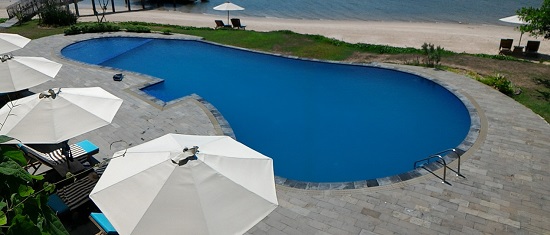


The image quality is good to passable, depending on the lighting conditions. The images taken during the day were sharp and natural looking, although they still had some amount of noise.
Night shots captured with the Night and Low Light (3-megapixel) modes are predictably noisier and you’ll need to keep your hand steady.
The dual LED flash works well when there is already some available light, for example in back-lit situations.
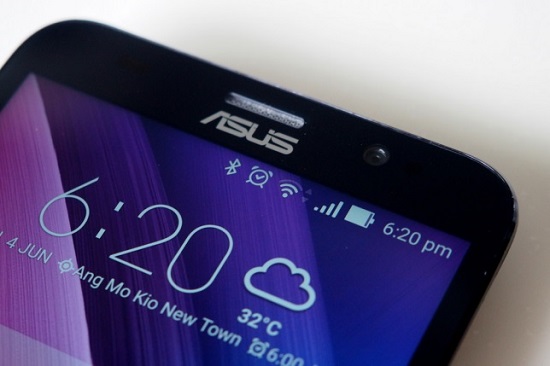
The 5-megapixel selfie shooter also comes with numerous shooting modes, unlike many of its competitors. Going beyond (the self-explanatory) Beautification, there are Selfie Panorama, Time Lapse and HDR modes, and you can experiment with some fun effects as well.
Performance and battery life
Unlike in the tablet space, Intel’s Atom mobile processors aren’t the most popular among smartphone manufacturers – save for a model or two from Lenovo and a full portfolio from Asus, you’d be hard-pressed to find other smartphone vendors dishing out devices with Intel’s chipset inside.
But that doesn’t mean it can’t handle the job. In fact, performance benchmarks score the 2.3GHz chipset higher than many of last year’s premium flagships, and it sits alongside many other higher-end mid-range smartphones today.
It also helps that it comes with the widely reported four gigabytes of memory which gives it more than enough muscle for multitasking. We ran at least 30 apps on the device with a number of graphically-intensive games at the same time, and didn’t experience any lag whatsoever.
Everything basically went along very smoothly, from apps and 3D games to web browsing and streaming content. Nothing we threw at it took longer than expected (save for that slight camera capture lag we mentioned earlier).
Generally we were impressed with the performance – but do note that this may not be the case with the other ZenZone 2 models that come with less memory and slower processors.
Battery life however, could be improved. The 3000 mAh battery tended to wear down pretty quickly, especially when we had many apps running at the same time.
The camera and Google voice search apps were big culprits in sucking up a lot of juice – so perhaps some software optimisation is needed there.
Asus does send out a warning if it detects that certain apps are using up more power, so that helps. Overall, it will last about a day, but with such a large capacity, that’s not optimal.
Thankfully it comes with a quick charge function, which is an excellent inclusion for the price.
Software and user experience
The ZenFone 2 is powered by Android 5.0.2 Lollipop but skinned with Asus’ very own ZenUI. The customisations are quite extensive, and a departure from Google’s own Material design interface.
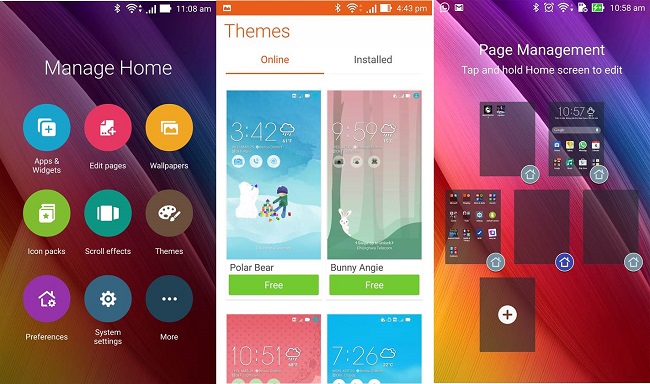
You can fully customise the desktop by selecting different themes, wallpapers, icon packs, scrolling effects and even fonts. It also lets you download more themes online, although the selection is not extensive.
Pinch the screen and you’ll be able to add new home screens, in order to fit in the long list of widgets and apps at your disposal.
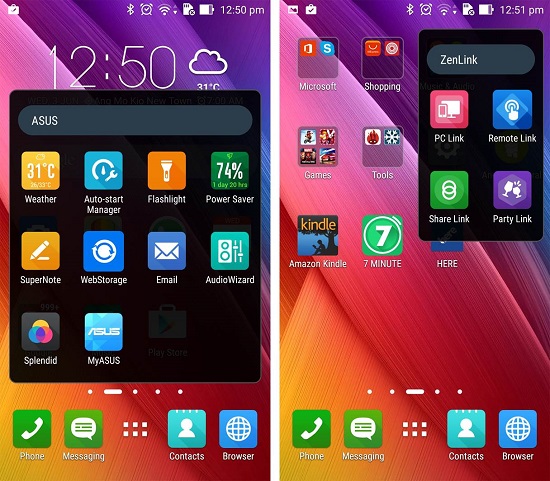
An app drawer is available and gives you access to all the apps, of which many are developed by Asus.
And there are lots of Asus apps, like Auto-start Manager (to control how apps start up), Do It Later (task manager), SuperNote (note taking), WebStorage (cloud storage), Remote Link (turns your phone into a PC remote), Share Link (file sharing over WiFi) and Party Link (file sharing with others in a group).
Some of them can be uninstalled to save you some space, but with 32GB of storage on board, that’s not really necessary.
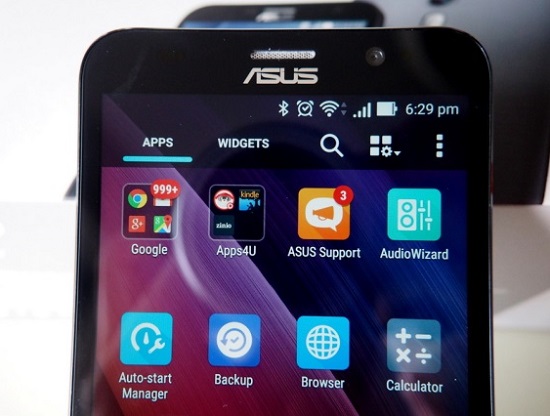
It also comes with preloaded third-party apps like Amazon Kindle (e-books), Zinio (e-magazines), and Dr Safety (security), but these can be easily removed if you’re not interested in them.
Swiping down from the top, you will find a list of 16 customisable shortcuts that lets you change the settings easily.
There’s also ZenMotion which gives you access to touch and motion gestures.
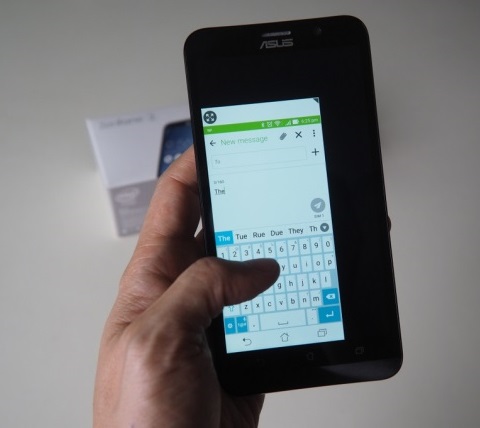
Asus has also included a one-handed mode (pic above). Once activated in the Settings, you only need to double-tap the home button and it will reduce the usable screen to the bottom corner.
The neat feature is that you can customise it to the size of your choice.
Generally, we believe it adds to the Android experience and provides a fair amount of functionality out of the box, without the need to download additional software from Google’s Play store.
Conclusion
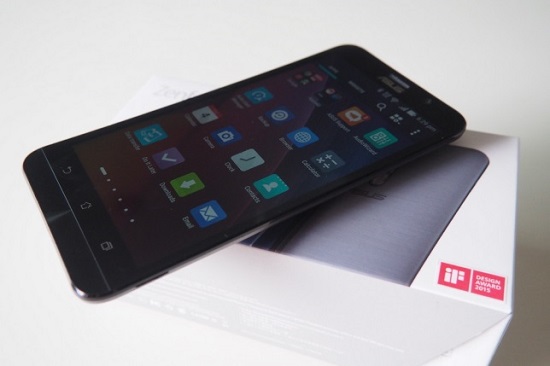
At S$429/ RM1,099, the ZenFone 2 is very attractively priced, considering the high-performance chipset, excellent display, and that enormous amount of memory and storage combination.
We believe Asus has hit all the right notes with this device and we’re happy to recommend it.
As for the lower specified models, we hesitate to suggest buying the ZE550ML due to the lower resolution HD display. A 5.5-inch screen should really utilise a Full HD resolution, in our opinion, so if budget is an issue, we would suggest getting the 5-inch ZE500CL model instead.
Not only would it be better for one-handed usage, but the smaller screen can still look great with an HD display, and it would see an improvement in battery consumption.
Priced at S$249/ RM599, this 5-inch ZenFone 2 is still competitive, but less attractively so.
